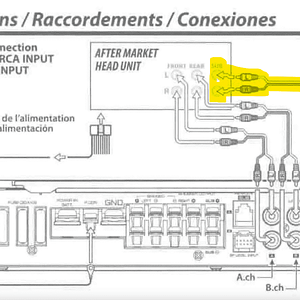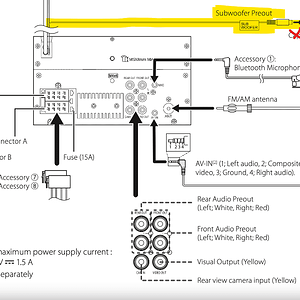You are using an out of date browser. It may not display this or other websites correctly.
You should upgrade or use an alternative browser.
You should upgrade or use an alternative browser.
-
13Participant count
-
Participant list
The Camry
Hey, I Try.
elaborate? do you mean how time alignment can effect phase which in turn effects peaks and dips in response and thus makes midbass more/less?People who use time alignment on their subwoofer channel(s) are doing it because it affects frequency response in the range that interacts with the midbass speakers. What else affects frequency response really effectively? EQ. If you don't have a full-fledged DSP you use what you've got.
trumpet 5,000+ posts
Barry Schanz
I've been told once we get phase right the frequency response will be right. Consider a sine wave played on the sub when a midbass channel is playing the same sine wave. Delaying one channel will result in the alignment of the peaks and troughs to change. At the listening position this can be measured on an RTA, or heard, as the frequency gets louder or quieter as it gets in phase and goes out of phase. This isn't the correct way to set time alignment, but it's one way we can hear the effects of time alignment. Time alignment should be used to make all the speakers have the same arrival time.elaborate? do you mean how time alignment can effect phase which in turn effects peaks and dips in response and thus makes midbass more/less?
The Camry
Hey, I Try.
But isn't phase frequency dependent? Something along the lines of you can have all frequencies entirely in phase so you kinda have to find what works best. There is no perfectly in phase component speaker set up. I've always been curious as to what frequencies to try and have in phase. As in which are most importantI've been told once we get phase right the frequency response will be right. Consider a sine wave played on the sub when a midbass channel is playing the same sine wave. Delaying one channel will result in the alignment of the peaks and troughs to change. At the listening position this can be measured on an RTA, or heard, as the frequency gets louder or quieter as it gets in phase and goes out of phase. This isn't the correct way to set time alignment, but it's one way we can hear the effects of time alignment. Time alignment should be used to make all the speakers have the same arrival time.
trumpet 5,000+ posts
Barry Schanz
Phase changes every time a speaker reverses direction. Because it changes slower at low frequencies it's most useful to try to get phase "right" at the sub/midbass crossover region. At least that makes sense to me. Using no crossover underlap or overlap, plus using Linkwitz-Riley 24 dB/octave slopes, is in theory the quickest way to getting phase right for midbass. That crossover setup is intended to sum flat.But isn't phase frequency dependent? Something along the lines of you can have all frequencies entirely in phase so you kinda have to find what works best. There is no perfectly in phase component speaker set up. I've always been curious as to what frequencies to try and have in phase. As in which are most important
Activity
No one is currently typing a reply...
Similar threads
What equipment are you using? It can be done physically (placement of sub), electrically (reversing wiring), electronically (DSP).
If your amp has...
- Started by surreal89
- General Car Audio
- 8
- 621
Exactly. Anything to get more frequencies coming from one source/area makes a big difference.
- Started by JohnPD
- General Car Audio
- 7
- 1K
Yes it is, it has significant difference.
I replaced my Mercedes head unit with the pioneer dmh-z5350bt, and I noticed that the built-in amp on...
- Started by JohnPD
- Head Units
- 10
- 1K
Choose the seat you're sitting in while driving.
- Started by Poppinjay
- General Car Audio
- 3
- 2K
Thanks
I appreciate the help
- Started by Jimg
- Wiring, Electrical & Installation
- 3
- 1K
About this thread
Latest topics
-
Suggestions on 6 channel amp/powering 3 way active front stage and driver selection.
- Started by JoeMama541
- Replies: 3
-
suggestion of which Butyl Automotive Sound Deadener Mat?
- Started by slater
- Replies: 5
-
-
Question about connections between head unit (HU), amp, and sub
- Started by kanihoncho
- Replies: 3
-
Does this amp/speaker combo work well for both sets of speakers?
- Started by kanihoncho
- Replies: 4


